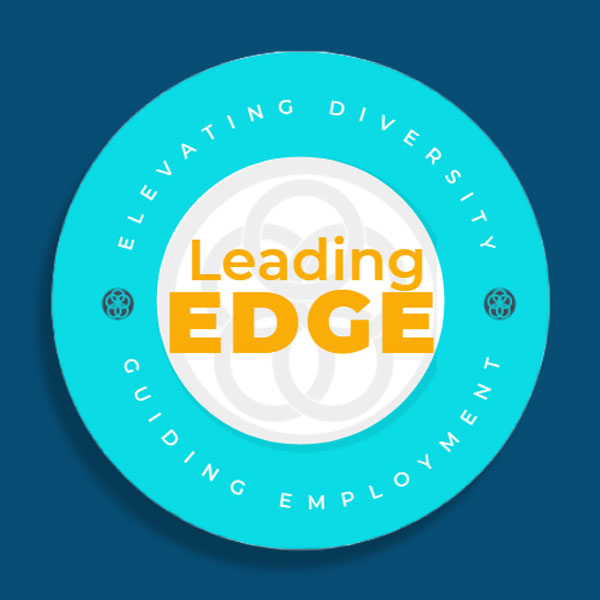Beyond the Usual Suspects: Donor Diversification

Are you relying on the same core supporters year after year? It may feel safe, but comfort can be dangerous when the world constantly changes.
For decades, nonprofits have leaned on what worked before: mailing to proven lists, refining models to target top-performing donors, and running digital lookalike campaigns that mirror their existing base. If a mailing list performs well, it’s reused. If modeled names yield strong results, those models are refined even further to zero in on the most responsive donors. Similarly, digital lookalike models often lead to donors who literally look like your current donors.
While effective in the short term, these practices create an audience filter bubble, leaving organizations with a donor base that reflects the demographics of yesterday, not today. In terms of racial and ethnic diversity, today’s giving still mirrors the America of 1990 rather than the America of now.
In addition to the ethical issues, a donor base limited to a few demographics stunts growth and leaves your organization vulnerable in times of crisis. To secure a more resilient, far-reaching community of supporters, you must intentionally break the mold.
There is an Audience Ready for Your Message
Diversifying your donor base isn’t about simple performative inclusion. It’s about creating a genuine sense of belonging and relevance for people from all walks of life and backgrounds.
Reaching new donors starts by understanding how different identities and backgrounds shape giving styles. For example, Hispanic Americans, one of the fastest-growing populations in the U.S., represent a powerful opportunity for nonprofits. With a purchasing power of more than $1.9 trillion, 67 percent of Hispanic Americans report charitable giving in line with national averages, and they are twice as likely as the average American to say they would give more if asked. However, this market is not monolithic — it requires real cultural competency and an approach that goes beyond mere translation to truly resonate.
Nor is this audience an outlier. African Americans and younger people are similarly more likely to say they would give more if they were asked more, and well.
Moving Beyond Traditional Approaches
But how do you reach these audiences? True donor diversification begins with a thoughtful shift in strategy. Some key steps.
Changing your audience building, moving beyond surface-level demographic profiles and exploring new approaches that pair data insights with meaningful experimentation. Having and using more than just transactional data on your donors will help you find new and diverse donors by looking outside the usual suspects. These data will also help you find what worked to attract the diverse donors that you already have on your file.
Remembering that new audiences may mean new messaging. Use testing to identify the right messaging mix that resonates with each audience segment. A nuanced blueprint helps you move past one-size-fits-all appeals to create deeper, more meaningful engagement. Make testing an integral part of your strategy to identify new opportunities. These insights allow you to craft customized donor journeys that align with individual motivations and preferred channels, maximizing impact and retention.
Exploring new channels. Hispanic donors are more likely to text than the general population. Younger people use different digital platforms. By testing different audiences across channels like mail, digital, and TV, you can uncover untapped omnichannel opportunities and better understand what truly speaks to each segment. An omnichannel approach ensures you reach potential supporters wherever they interact. Testing combinations of channels and content formats can reveal the most effective strategies for engaging new groups and re-engaging lapsed donors.
Listening. Listening tours, interactive events, and even social media polls can uncover whether a community gravitates toward certain programs or if matching gifts and planned giving are especially appealing. By using these insights, you can craft outreach that feels personal, not just personalized. When donors feel seen, valued, and understood, their connection to your mission deepens.
Customizing. For example, a children’s hospital seeking to connect with a broader range of supporters might create messaging that highlights its family-focused care, groundbreaking pediatric treatments, or outreach programs that appeal differently depending on the audience. Feedback from surveys or post-donation follow-ups could reveal that younger donors are drawn to digital campaigns featuring individual patient stories, while older donors prefer mail appeals that emphasize legacy giving. These also will help you find communication techniques that cross demographic lines – a parent of a child treated at that hospital will likely react similarly to another parent regardless of demographic factors.
Adapting and responding with real-time feedback loops. Incorporate real-time tools like text surveys, social media polls, or post-donation check-ins to gather immediate donor feedback. Use this data to adjust your messaging, refine channel strategies, and ensure you’re meeting donors where they are. This responsive approach strengthens connections and keeps your campaigns relevant, even as donor preferences shift.
What would your donor file look like if it truly reflected the diversity of the communities you want to serve? Donor file diversification is a strategic imperative. By intentionally expanding your reach beyond familiar audiences, you create a donor base that is more representative, resilient, and ready to grow alongside your mission.
This shift demands precision, patience, and commitment. It’s all about understanding new giving patterns, crafting authentic, donor-centric messages, and finding untapped opportunities across channels. Organizations willing to make these investments will open doors to partnerships and possibilities that a narrow donor base could never sustain. Rethinking who your donors are — and who they could be — is the path to sustainable growth and real diversification.
This guest blog post was written by a TNPA 2024 DEI Programming Sponsor, with our appreciation for their support. As with all our guest posts, the views and opinions expressed in this article are those of the author and do not necessarily represent the official position of The Nonprofit Alliance.



